Archive
Gustav Oelsner
- Gustav
- Oelsner
- 23-02-1879
- Poznań (PL)
- 26-04-1956
- Hamburg (DE)
- ArchitectCity Planner
Gustav Oelsner became the founding father of urban planning in Turkey, his country of exile. He was also the author of numerous articles for the architectural journal Arkitekt.
Word Count: 28
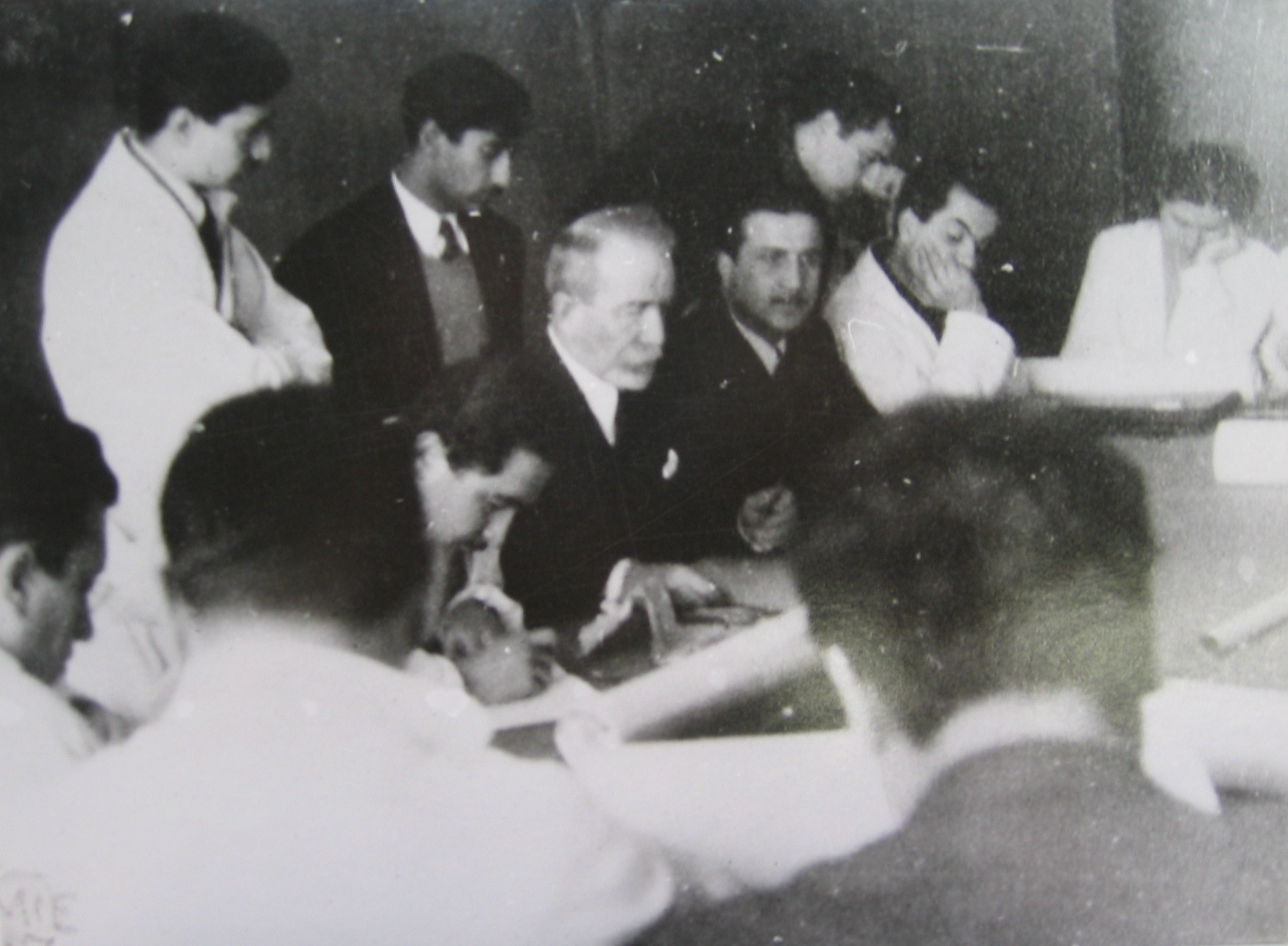
Gustav Oelsner with students at the Technical University Istanbul, 1941 (Staats- und Universitätsbibliothek Hamburg Carl von Ossietzky, Nachlass Gustav Oelsner, NGO:Dd:11). 
Gustav Oelsner’s essay “Yaşayış Şekillerini kuvvetlendirmek lüzumludur” [The need to improve living conditions] with his own drawings, in Arkitekt, 1946, p. 132 (Private Archive). 
Gustav Oelsner, House with two storage areas and shop, c. 1946, study (Hamburgisches Architekturarchiv). Oelsner used this drawing for his essay “Yaşayış Şekillerini kuvvetlendirmek lüzumludur” in Arkitekt magazine, 1946. 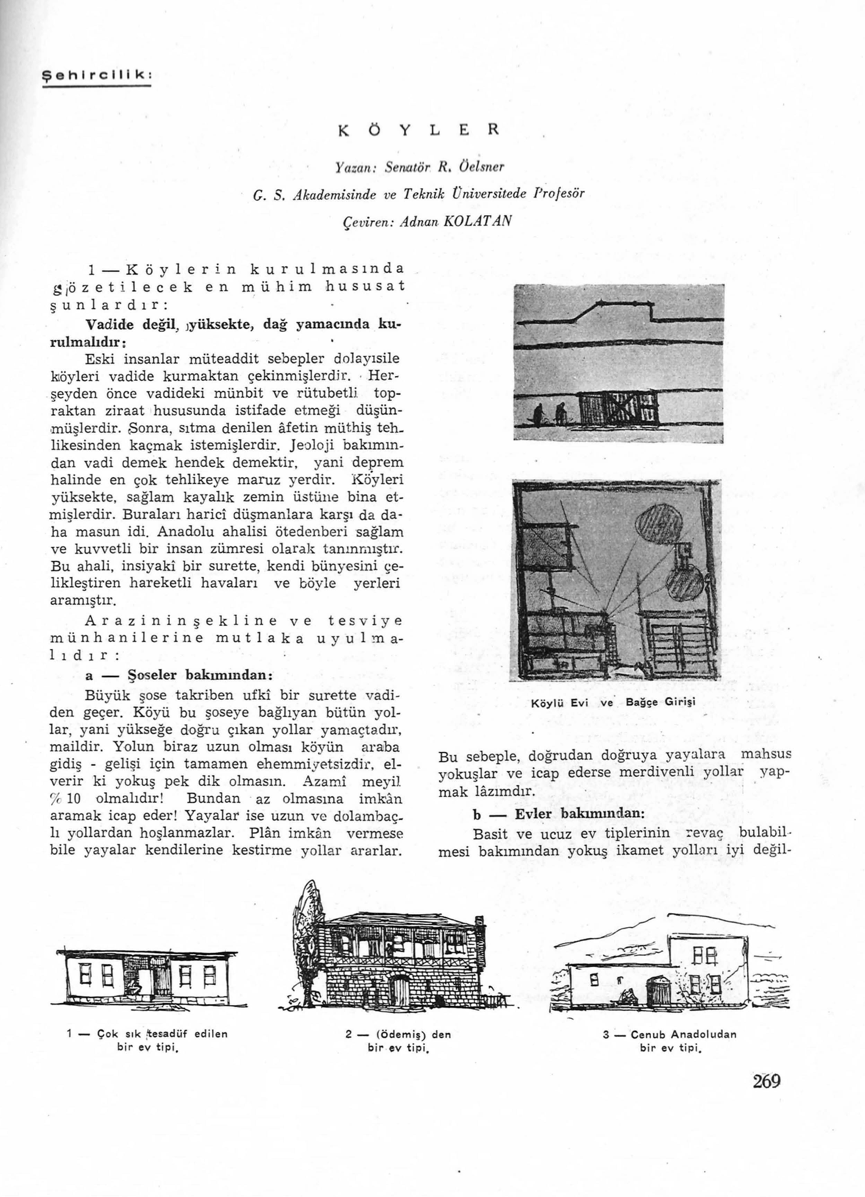
Gustav Oelsner. “Köyler.” [Villages] Arkitekt, no. 11-12, 1944, p. 269 (http://dergi.mo.org.tr). 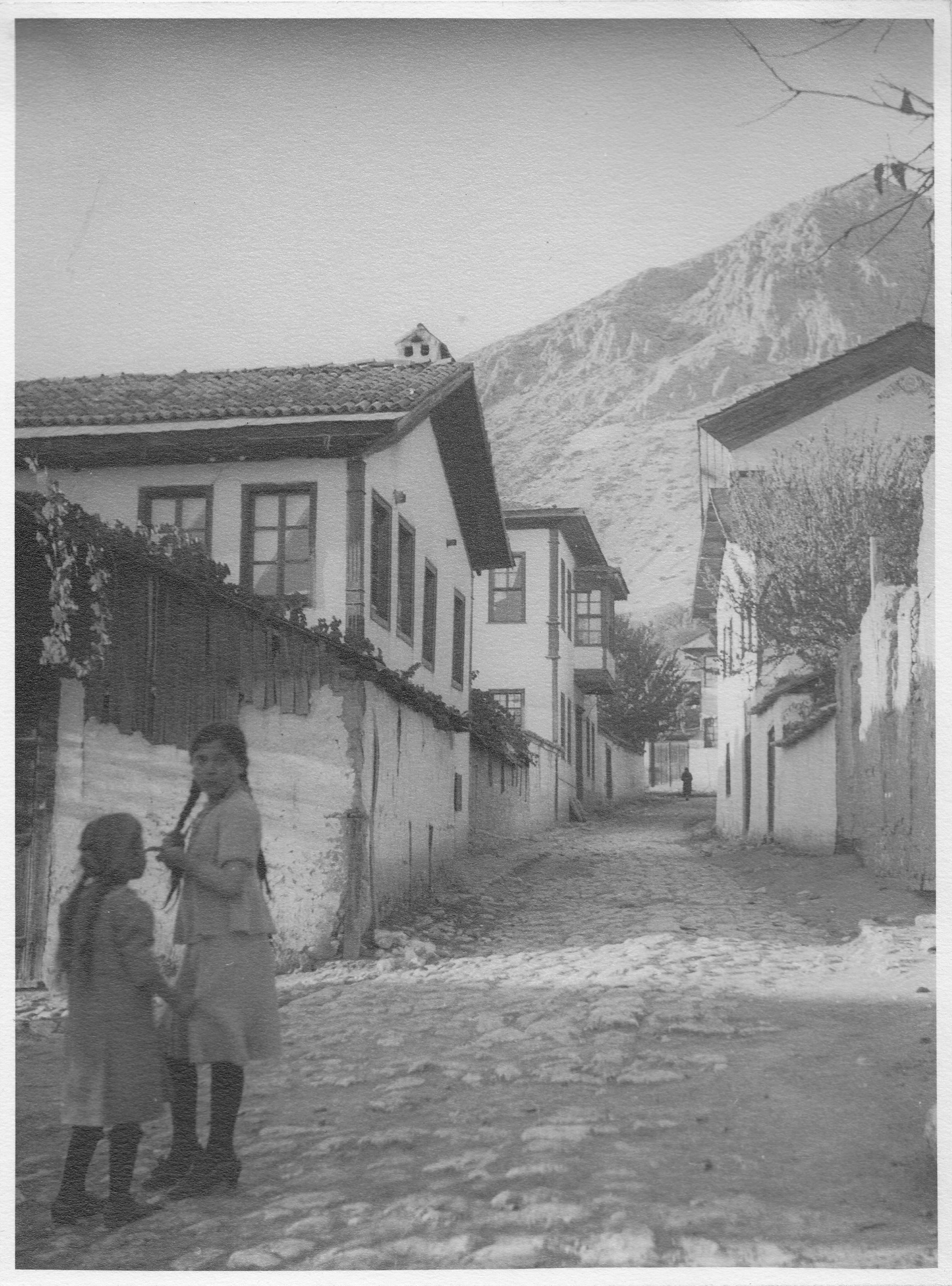
Gustav Oelsner, Traditional village structure in Amasya, undated photography (Hamburgisches Architekturarchiv). 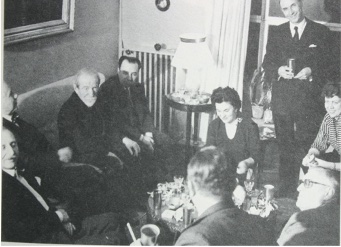
Gustav Oelsner (third left) in the apartment of Kemal Ahmet Arû, far right, Rudolf Belling, 1955 (Arû 2001, 69). Oelsner visited Turkey one more time, in 1955, and received an honorary doctorate from Istanbul Technical University. 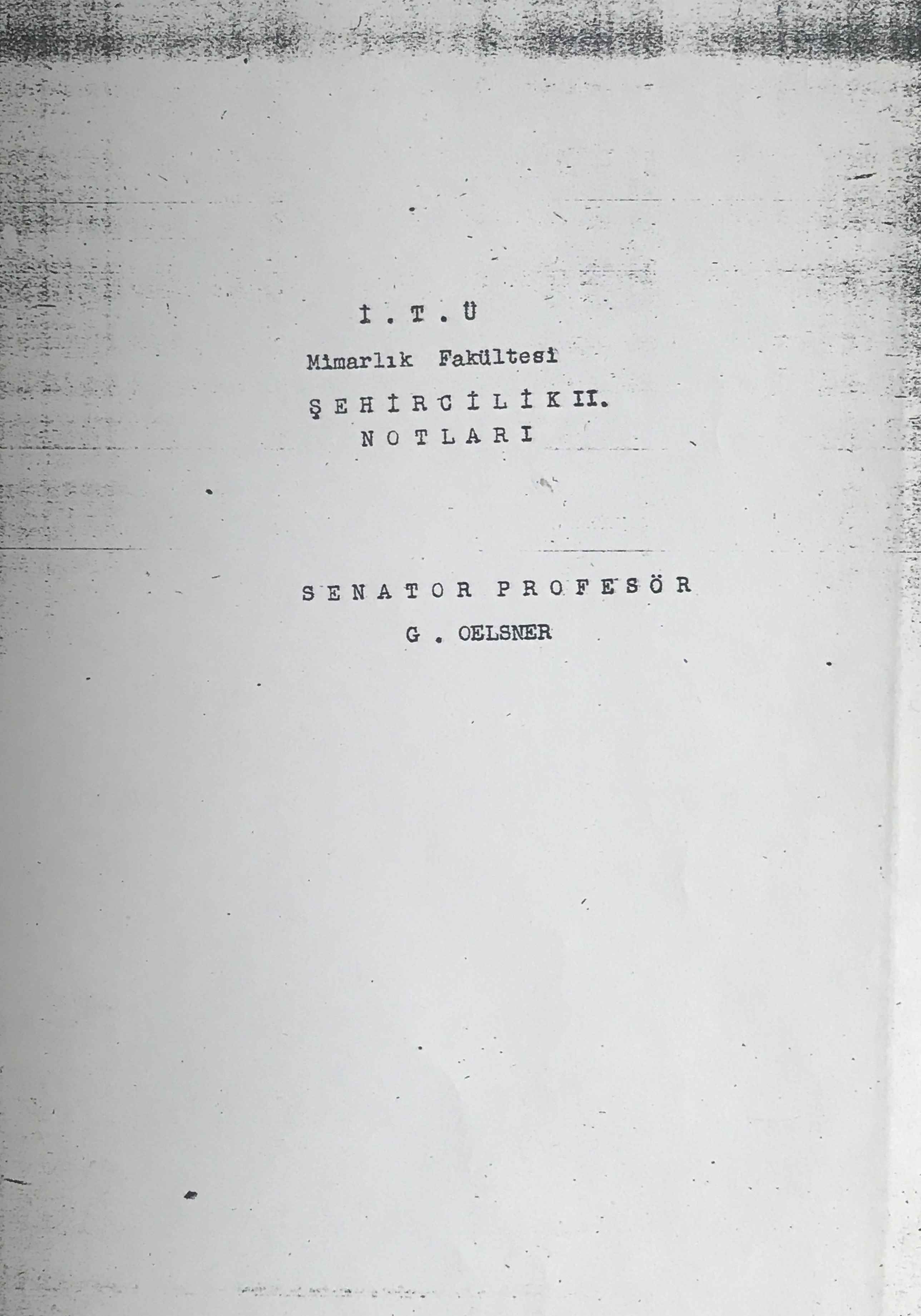
Gustav Oelsner's I.T.Ü. Mimarlık Fakültesi Şehircilik II. Notları, undated [before 1945], cover page (Archive Kemal Ahmet Arû, Istanbul). Oelsner's TU Istanbul urban planning lecture notes, translated into Turkish by Arû. 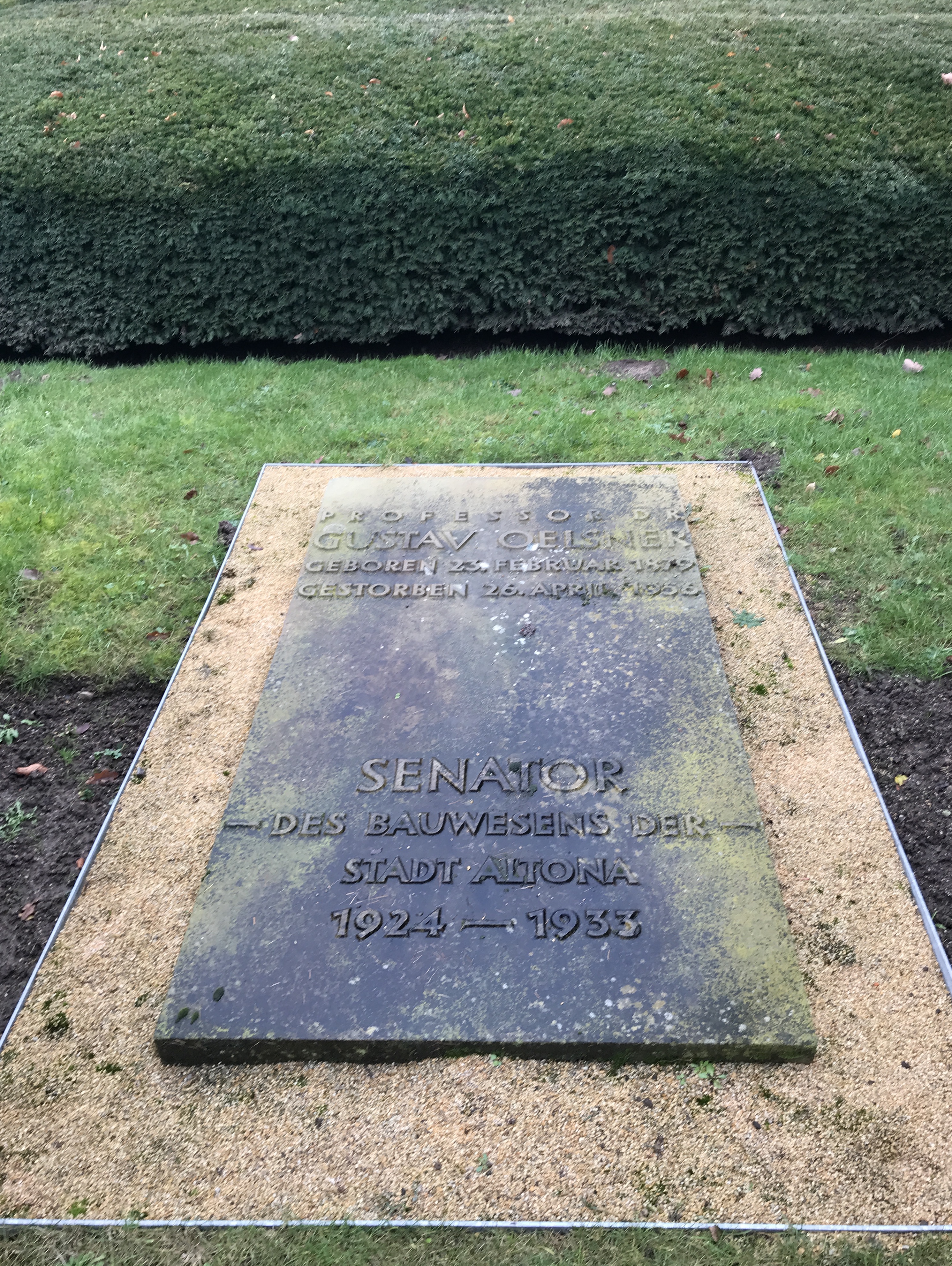
Grave of Gustav Oelsner at the Ohlsdorf Cemetery in Hamburg, where the architect is buried in the Old Hamburg Memorial Cemetery (Althamburgischer Gedächtnisfriedhof) with the graves of notable Hamburg citizens (Photo: Burcu Dogramaci, 2020). Arû, Kemal Ahmet. Bir üniversite hocasının yaşamının 80 yılı. Yam Yayınları, 2001.
Bartels, Olaf. “Gustav Oelsner in der Türkei 1939–1949.” Architektur in Hamburg. Jahrbuch 1990, edited by Hamburgische Architektenkammer, Junius, 1990, pp. 142–147.
Bartels, Olaf. “Gustav Oelsner in der türkischen Emigration.” Der Architekt Gustav Oelsner. Licht, Luft und Farbe für Altona an der Elbe, edited by Peter Michelis, Dölling und Galitz Verlag, 2008, pp. 222–231.
Dogramaci, Burcu. “Leben für das Bauen – Bauen für das Leben: Gustav Oelsner (1879–1956) zum 50. Todestag.” Exil, no. 2, 2005, pp. 53–68.
Dogramaci, Burcu, editor. Gustav Oelsner. Stadtplaner und Architekt der Moderne. Junius, 2008.
Dogramaci, Burcu. Kulturtransfer und nationale Identität. Deutschsprachige Architekten, Stadtplaner und Bildhauer in der Türkei nach 1927. Gebr. Mann, 2008.
Dogramaci, Burcu. “‘Ewig schönes Istanbul – Daima hasret ediyoruz’. Ernst Reuter und Gustav Oelsner als Urbanisten im türkischen Exil.” Ernst Reuter. Kommunalpolitiker und Gesellschaftsreformer 1921–1953 (Reihe Politik- und Gesellschaftsgeschichte, 81), edited by Hans Reif, Dietz, 2009, pp. 203–238.
Dogramaci, Burcu. Fotografieren und Forschen. Wissenschaftliche Expeditionen mit der Kamera im türkischen Exil nach 1933. Jonas, 2013.
Istanbul Teknik Üniversitesi, editor. Ord. Prof. Dr. Ing. h. c. Gustav Oelsner. Istanbul Teknik Üniversitesi, 1957.
King, Charles. Midnight at the Pera Palace. The Birth of Modern Istanbul. W. W. Norton & Company, 2014.
Oelsner, Gustav. “Şehir inşacılığında ekonomi mülâhayalarına uymak.” [The adaptation to economic considerations in urban development] Arkitekt, no. 7–8, 1943, pp. 171–173.
Oelsner, Gustav. “Iktisadî Temel Kaideler.” [Fundamentals of economic efficiency] Arkitekt, no. 9–10, 1943, pp. 206–210.
Oelsner, Gustav. “Şehirlerin Bakımı.” [The care of the cities] Arkitekt, no. 11–12, 1943, pp. 254–257.
Oelsner, Gustav. “İskan Semetleri ve şehir inşacılığı.” [Settlements and urban development] Arkitekt, no. 1–2, 1944, pp. 25–26, 34.
Oelsner, Gustav. “Köyler.” [Villages] Arkitekt, no. 11–12, 1944, pp. 269–273.
Oelsner, Gustav. “Şehircilik.” [Urban planning] Arkitekt, no. 3–4, 1945, pp. 71–74.
Oelsner, Gustav. “Tabiatın ve Şehirlerin Yeşilliği.” [Nature and urban green] Arkitekt, no. 7–8, 1945, pp. 169–174.
Oelsner, Gustav. “Şehircilikte Abidevlilik.” [Monuments in urban development] Arkitekt, no. 11–12, 1945, pp. 265–270.
Oelsner, Gustav. “Yaşayış Şekillerini kuvvetlendirmek lüzumludur.” [The need to improve living conditions] Arkitekt, no. 5–6, 1946, pp. 131–136.
Oelsner, Gustav. “Modern Iskan Semtı ve Şehirlicik.” [Modern settlements and urban development] Arkitekt, no. 7–8, 1946, pp. 168–170.
Oelsner, Gustav. “Şehirlerde sürekli bahçeler.” [Allotment gardens in the cities] Arkitekt, no. 9–10, 1946, pp. 226–227.
Oelsner, Gustav. “Şehircilikte tabii Cevvı ve sıhhî şartlar.” [Natural life and hygienic conditions in urban development] Arkitekt, no. 3–4, 1947, pp. 92–96.
Oelsner, Gustav. “Çarşı holleri.” [Market halls] Arkitekt, no. 9–10, 1947, pp. 233–234.
Timm, Christoph. Gustav Oelsner und das neue Altona, Kommunale Architektur und Stadtplanung in der Weimarer Republik. Ernst Kabel Verlag, 1984.
Word Count: 403
Hamburgisches Architekturarchiv, Hamburg.
Staats- und Universitätsbibliothek Hamburg Carl von Ossietzky, Estate Gustav Oelsner.
Word Count: 14
This entry is dedicated to the memory of Kemal Ahmet Arû (1914–2013), who shared his knowledge of Gustav Oelsner with me and provided me with materials from his collection. My deepest thanks go to Sabine Kock from Hamburgisches Architekturarchiv and to Jürgen Neubacher from Staats- und Universitätsbibliothek Hamburg Carl von Ossietzky, who gave me permission to reproduce the works of Gustav Oelsner. The digital issues of Arkitekt magazine on the Mimarlar Odası website were an important source for this entry.
Word Count: 81
Istanbul, Turkey (1939–1949).
TU Istanbul, Gümüşsuyu, Istanbul (workplace); Konak Otel, Istiklal Caddesi (now Tarihi Tokatlıyan Iş Hanı ve Pasajı Istiklal Caddesi No. 76), Beyoğlu, Istanbul (residence).
- Istanbul
- Burcu Dogramaci. "Gustav Oelsner." METROMOD Archive, 2021, https://archive.metromod.net/viewer.p/69/2949/object/5138-10801459, last modified: 20-06-2021.
-
Rudolf BellingSculptorIstanbul
As a professor at the Academy of Fine Arts and Technical University in Istanbul from 1937 until 1966, Rudolf Belling taught his students the technicalities of form, material and proportion.
Word Count: 28
KenanFashion IllustratorGraphic ArtistIstanbulThe Turkish graphic designer Kenan was a popular artist in the Weimar Republic. He returned to Istanbul in 1943 to take up a position at the Academy of Fine Arts.
Word Count: 29
ArkitektMagazineIstanbulThe architecture magazine Arkitekt was an important platform for emigrated architects and urban planners such as Bruno Taut, Martin Wagner, Wilhelm Schütte, Ernst Reuter and Gustav Oelsner.
Word Count: 28
Mimarî BilgisiBookIstanbulThe architect Bruno Taut published his textbook Mimarî Bilgisi in 1938, only two years after his emigration to Istanbul, where he was appointed professor at the Academy of Fine Arts.
Word Count: 29
Leon TrotskyPoliticianIstanbulBanished by Stalin, the revolutionary politician Leon Trotsky and his entourage arrived in Istanbul in 1929. He settled on Büyükada, one of the Princes’ Islands in the Sea of Marmara.
Word Count: 31